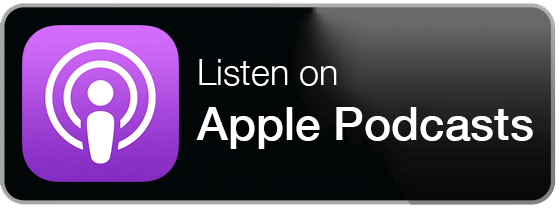Today’s Focus of Attention is reader-supported. We sometimes include products we think are useful for our readers. If you buy through links on this page, we may earn a small commission.
The brain controls everything we do, think, and feel.
This vital central processing unit is also the most mysterious and least understood, with secrets still waiting to be discovered.
Today’s post revolves around 10 jaw-dropping truths about this cerebral wonderland, offering insights that will amaze you and deepen your appreciation for this masterful organ.
Number 1. The Brain Can Survive Without Oxygen for Up to 5 Minutes
Number 2. The Brain is Mostly Water
Number 3. The Brain Can’t Feel Pain
Number 4. The Brain is the Fattest Organ in the Body
Number 5. The Brain Changes its Structure and Function Throughout Life
Number 6. The Brain Generates Enough Electricity to Power a Light Bulb
Number 7. The Brain Has a Memory Capacity of Around 2.5 Petabytes
Number 8. The Brain Uses 20% of the Body’s Energy
Number 9. The Brain Can Create and Manipulate Mental Images
Number 10. The Brain is Influenced by Hormones, Emotions, and Social Factors
Number 1. The Brain Can Survive Without Oxygen for Up to 5 Minutes

The brain withstands oxygen deprivation for four to five minutes, after which irreversible damage may occur if O2 levels are not promptly restored.
Understanding Brain Cell Tolerance to Lack of Oxygen
Red blood cells play a key role in transporting oxygenated blood from the lungs through the cardiovascular system to the brain and other parts of the body.
But when the vital gas supply is cut off, brain cells start dying. This is known as “apoptosis.”
To extend your cerebrum’s endurance to a shortage of oxygen, you’ve got to train as a free diver. Those professional athletes develop amazing abilities in holding their breath, with the world record set in 24 minutes under water.
Implications in Medical Emergencies
In situations such as cardiac arrests or strokes, the brain’s resiliency to O2 deficiency is paramount for the patient’s survival. For instance, cerebrovascular accidents can block blood flow, and heart attacks interfere with the heart’s ability to pump.
Main Types of Injuries from Oxygen Deprivation
Hypoxia
This occurs when your cerebral tapestry receives reduced oxygen levels caused by respiratory failure, thrombi, or strokes. If not addressed soon, it can give rise to long-term dysfunction.
Anoxia
This is a more critical condition where the brain experiences complete O2 loss. Causes include severe pulmonary collapse, cardiac arrest, or extreme bleeding. Anoxia might quickly lead to irreversible neural damage and require immediate medical intervention.
Both conditions have serious consequences. So, in medical emergencies, opportune restoration of oxygen supply is paramount.
New Treatment
Scientists are exploring hypothermia as an approach to delay the progress of hypoxia and mitigate neurological harm. This procedure involves cooling the brain to slow metabolic processes, thereby reducing the cerebral matter’s O2 requirements.
Number 2. The Brain is Mostly Water

The estimated amount of water in the brain is between 75% and 85%. This high content is essential for its basic functionality and overall health.
Importance of Water in Brain Function
Optimal Functioning
Proper hydration is key for thought and memory. H2O is also necessary for the production of hormones and neurotransmitters. Thus, the brain needs a delicate balance of water and other elements to operate, and dehydration disrupts this equilibrium, leading to reduced efficiency in neurons.
Cognitive Performance and Mood
Dehydration likewise affects short-term memory, numerical ability, psychomotor function, and sustained attention. Alertness, concentration, fatigue, and tension are as well sensitive to hydration changes. Even mild desiccation can alter mood states and make completing tasks harder.
Effects of Different Population Groups
Children and older adults are at a higher risk of running dry due to a lack of awareness of fluid needs or trouble interpreting thirst signals.
Water’s Role in Brain Health
Hydration and Brain Size
Neurons may shrink in volume if dehydrated, a common issue in the elderly. This is when neurological diseases such as dementia, Alzheimer’s, Parkinson’s, and Lou Gehrig’s disease appear.
Nutrient Delivery and Toxin Removal
At the same time, H2O serves as a highway to transport nutrients and remove harmful substances. A well-hydrated brain ensures stronger nutrient-toxin exchange, leading to better concentration and mental alertness.

Take air-drumming to the next level
Number 3. The Brain Can’t Feel Pain

Your command centre tissue itself lacks pain receptors, known as “nociceptors.” They are special nerves that respond to noxious stimuli like extreme heat, cold, or pressure.
This absence allows for brain surgery, causing no discomfort to the patient and, in some cases, even while they are awake.
In spite of not having nociceptors, your cerebrum is well protected. On the outside, the skull works as the hard barrier, and on the inside, it floats in the cerebrospinal fluid. It provides cushioning against sudden impacts and is enclosed in membranes called “meninges.”
Headaches, indeed, are not brain aches. They originate from nociceptors in structures surrounding the brain, such as the meninges, blood vessels, and muscles. When these tissues become inflamed or damaged, they result in cephalalgia.

Number 4. The Brain is the Fattest Organ in the Body

Around 60% of the brain is composed of fat, foremost in the form of phospholipids. These are molecules that have a water-loving head and a water-repelling tail. They make the main part of the cell membranes, the thin layers that surround and protect these cytological units.
The most important type of cell in your thinking centre is the neuron. Neurons have extensions called “axons,” which transmit electrical signals over long distances. However, axons need to be insulated to prevent the loss of electrical charge and interference from other impulses. This is where the fat comes in handy.
Fat is an essential component of the brain that helps insulate the nerve cells and speeds up the transmission of signals.
Good fats for the mind are omega-3 fatty acids, found in fish, nuts, and seeds.
The brain has another set of cells: “oligodendrocytes.” They produce “myelin,” a fatty substance that wraps around the axons and forms a protective sheath. This matter acts as an electrical tape, allowing the signals to travel faster.
Multiple sclerosis, stroke, and Alzheimer can damage myelin. When it happens, the electrical pulses are disrupted, leading to various neurological symptoms such as vision problems, muscle weakness, numbness, pain, and cognitive impairment.
Number 5. The Brain Changes its Structure and Function Throughout Life

The brain is plastic, meaning that it can adapt and reorganise itself in response to learning, experience, and injury. This ability is referred to as “neuroplasticity.”
Neuroplasticity
It allows the mental maestro to form new connections between neurons. These links, called “synapses,” are essential for knowledge and memory.
When you learn something or practise a skill, some synapses strengthen, while others weaken and later disappear. This process is known as “synaptic pruning.”
The plasticity of the brain also makes it change its physical structure. In other words, when you study a foreign language or play a musical instrument, certain areas of your cerebral matter grow larger because the neurons there increase the number of dendrites.
“Dendrites” are the branches that receive signals from other neurons and their dendritic spines, the tiny protrusions that form synapses.
Recovery After Injury or Illness
When the brain is damaged, neurons die and connections are lost, leading to impairment in various tasks, such as movement, sensation, cognition, or emotion.
To compensate for the damage, the brain rewires itself and recruits other regions to take over the missing functions. This happens through two fundamental mechanisms: “axonal sprouting” and “cortical remapping.”
Axonal Sprouting
In this process, the surviving neurons grow new axons and form new synapses with them. This way, the brain restores some of the connections that the injury destroyed.
Cortical Remapping
Through this mechanism, the brain reassigns functions to different regions. To illustrate, if the region controlling the right hand is hurt, another sector that controls the left hand may take over the function of the right hand. In doing so, the brain uses its existing resources to perform the tasks the wound has impacted.
Number 6. The Brain Generates Enough Electricity to Power a Light Bulb

Your brain creates electricity through the activity of neurons, their axons, and dendrites.
When a neuron is activated, it induces an electrical impulse, titled an “action potential,” that travels along the axon to the synapse.
At the synapse, the impulse triggers the release of neurotransmitters, which cross the synaptic gap and bind to receptors on the dendrite of the next neuronal unit. Afterwards, the electrical signal is converted into a chemical one and then back into an electrical.
This method of electrical and chemical signalling is the basis of how the brain communicates and processes information.
Glucose: The Fuel of the Brain
Your cerebrum generates electricity from glucose and consumes over 20% of the body’s energy, despite only accounting for 2% of the body weight.
It needs a constant supply of glucose to function, as it cannot store much itself. This simple sugar is broken down by a process called “glycolysis,” which produces the “adenosine triphosphate” molecule. ATP is the currency of the cell, and it’s used to energise various processes, including the generation of electrical impulses in neurons.
Your Brain Can Power an LED
The cerebral tapestry is capable of producing 12 to 25 watts of electricity, enough to turn a light-emitting diode on.
The amount of current released depends on the number and action of neurons, the type and frequency of signals, and the efficiency of energy conversion.
A typical adult human brain has close to 86 billion neuronal units, and each of them can fire up to 200 times per second. The voltage of an “action potential” is about 70 millivolts, and the current is one nanoampere. Therefore, the power of a neuron alone is not far off 70 nanowatts.
Number 7. The Brain Has a Memory Capacity of Around 2.5 Petabytes

In the same way that the bit is the basic unit of storage on a hard drive, the synapse is for the brain.
A single synapse stores almost one byte. Based on these estimates, the brain can store 2.5 petabytes of information, which is equivalent to 2.5 million gigabytes or 2.5 billion megabytes.
This is a huge quantity of data, comparable to the entire content of the World Wide Web or the Library of Congress. Nevertheless, this is only an approximation. The actual capacity may vary depending on the individual, the info, and the method of measurement.
However, the brain does not store information in a linear or isolated manner but in a distributed and interconnected fashion.
A single word or an image activates multiple neurons and synapses in different regions, forming a complex neural network. Likewise, a neuron, or synapse, takes part in diverse neural networks, encoding various aspects of information.
This way, your central nervous system’s hub can store more knowledge than the sum of its parts and better retrieve it.
Number 8. The Brain Uses 20% of the Body’s Energy

Your brain devours over 320 calories per day just to think. This consumption is for processing and transmitting information through electric signals. This constant activity results from alertness, monitoring the environment, and regulating the body’s homeostasis.
The cerebral metabolic rate of oxygen (CMRO2) serves as a gauge for the brain’s metabolism.
The normal CMRO2 in humans is about 3.5 ml/100 g brain/min. Age, sex, brain region, mental labour, and disease all impact this rate.
Number 9. The Brain Can Create and Manipulate Mental Images

Mental images are experiences that resemble the perception of an object, event, or scene, but occur when the relevant stimulus is not present to the senses.
Those representations are produced by recalling a previous sensory experience, such as remembering how a rose looks and smells, or by making up a new concept, such as picturing a unicorn.
Brain’s Influence
When you perceive something, the information travels from your eyes, ears, nose, tongue, or skin to the primary sensory cortex, where it’s processed and sent to higher-order regions for further analysis and recognition.
But when you imagine, the process is reversed: the higher-order regions activate the primary sensory cortex, generating a top-down signal that simulates the perception of the imagined stimulus. Through this, the brain can create a mental representation of something that is not physically present.
Specialised Regions
The “ventral visual stream,” which runs from the occipital to the temporal lobe, recognises what objects are and what they mean.
Within this stream, other areas for specific categories converge, such as the “fusiform face area” (FFA) for faces, the “parahippocampal place area” (PPA) for scenes, and the “lateral occipital complex” (LOC) for shapes.
On the other hand, the “dorsal visual stream,” extending from the occipital to the parietal lobe, is in charge of locating where things are and how they move. Inside it, specific areas are involved in spatial attention, motion perception, and visuomotor coordination.
Memory, Imagination, and Creativity
Memory is the ability to store and retrieve information from past events or facts; while imagination generates novel and useful ideas or scenarios that go beyond reality.
Creativity, in contrast, produces original and valuable outcomes or solutions for a context or problem.
All these functions rely on the brain’s capacity to manipulate mental images and visual representations in flexible and adaptive ways, combining, transforming, or reorganising them according to the task or goal.
Number 10. The Brain is Influenced by Hormones, Emotions, and Social Factors

Hormones are chemical messengers produced by glands and travel through the bloodstream to act on target organs. They can affect the brain’s structure, function, and activity, as well as modulate mood, cognition, and behaviour.
The ones having a significant impact on the cerebrum are cortisol, melatonin, and growth, sex, and thyroid hormones.
Hormones
Cortisol
It’s a hormone that the adrenal glands release in response to physical or psychological pressure. It helps the brain cope with acute stress by enhancing memory, attention, and alertness. However, an excess of cortisol impairs the ability to remember, reduces neurogenesis, and increases inflammation.
Melatonin
Melatonin is generated by the pineal gland and regulates the circadian rhythm, the body’s internal clock that synchronises with the day-night cycle. This hormone influences the secretion of other hormones, the regulation of genes, and the modulation of inflammation in the brain while protecting it with its antioxidant effects. Its deficiency or disruption causes neurological and psychiatric disorders, including insomnia, jet lag, depression, anxiety, and dementia.
Thyroid Hormones
They control the body’s growth and metabolism and influence the brain’s maturation and function. A shortage in thyroid hormones may cause cognitive impairment, depression, anxiety, and psychosis.
Sex Hormones
In charge of sexual development, reproduction, and behaviour, these hormones are produced in the ovaries and testes. Other functions include neuroprotection, neurotransmission, neuroplasticity, and neuroinflammation.
Growth Hormone
It comes from the pituitary gland and stimulates the spread of tissues and organs, including the brain, where it enhances neurogenesis, synaptic plasticity, and neuroprotection. Its deficiency or excess causes cognitive impairment, depression, anxiety, and psychosis.
Emotions
Emotions are subjective feelings associated with physiological and behavioural responses to stimuli or events.
The “limbic system” is the region involved in the generation, regulation, and expression of sentiments and includes the amygdala, the hippocampus, the hypothalamus, and the cingulate cortex.
Amygdala
Located in the temporal lobes of the brain, it processes emotional stimuli, in particular those related to fear, anger, and disgust. The amygdala activates the hypothalamus and the autonomic nervous system, triggering a fight-or-flight response to threats. Stress, trauma, anxiety, depression, and post-traumatic stress disorder (PTSD) can impact this almond-shaped mass.
Hippocampus
This curved structure, found in the medial temporal lobes, is crucial for the formation, consolidation, and retrieval of memories, in particular those related to personal experiences and spatial navigation. Stress, ageing, and neurodegenerative diseases like Alzheimer’s affect it.
Hypothalamus
The base of the brain is home to this small complex, which regulates temperature, hunger, thirst, sleep, the circadian rhythm, the modulation of aggression, pleasure, and reward. It also influences the secretion of cortisol, thyroid, and sex hormones. Stress, obesity, and eating disorders affect the Hypothalamus.
Cingulate Cortex
Involved in integrating cognitive and sensory information, it modulates empathy, compassion, guilt, attention, motivation, and conflict resolution processes. Depression, bipolar disorder, and schizophrenia interfere with this part of the brain.
Social Factors
These are variables of the human environment that may influence the brain’s structure, function, and activity, as well as regulate mood, cognition, and behaviour.
Social Learning
In this process, the brain gains information, skills, and behaviours from observing and interacting with others. The “mirror neuron system” is the network of regions involved in social learning and comprises the “inferior frontal gyrus,” “inferior parietal lobule,” and the “superior temporal sulcus.”
Social Stress
It is the perception or experience of a threat or challenge related to social situations. The net engaged in this aspect is the “social pain network” and includes the “cingulate cortex,” “insula,” and the “amygdala.”
Social Reward
This is the positive reinforcement or feedback that the brain receives from praise, approval, or affection. The group in charge of this function is the “social reward network,” which involves the “ventral striatum,” “orbitofrontal cortex,” and the “ventromedial prefrontal cortex.”
Social Regulation
Through this sequence, the mental maestro adjusts its emotional and behavioural responses based on context and expectations. The key areas in this network are the “dorsolateral prefrontal cortex,” “ventrolateral prefrontal cortex,” and the “anterior insula.”
Final Thoughts
Without a doubt, the brain is not just a mere part of our anatomy, but a profound and intricate masterpiece of nature.
These 10 facts remind us of the importance of nurturing our brain health, be it through proper hydration, nutrition, mental exercises, or understanding its plasticity.
Do you know any other surprising details about the brain?
Please share your comments in the section below.


